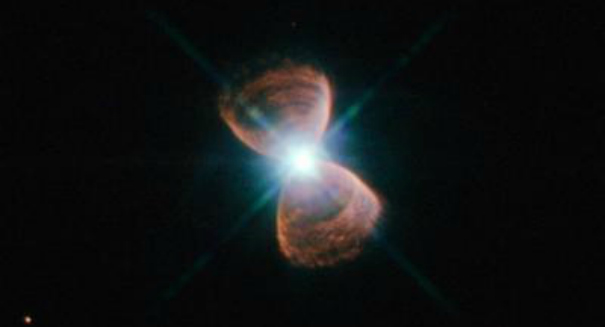
Astronomers believe that planetary nebulae are formed by the rotation of the star system from which they originate.
Using the Hubble Space Telescope and the New Technology Telescope to study more than 100 planetary nebulae in the central bulge of our own Milky Way galaxy, astronomers have discovered that “butterfly” nebulae are in the habit of being bizarrely aligned, despite their dissimilar histories and varied features.
In the final stages of a Sun-like star’s life, the star puffs its outer layers out into the surrounding space, creating objects called planetary nebulae in a variety of stunning shapes. Bipolar planetary nebulae, which is one type of such nebulae, form butterfly shapes around their progenitors.
According to a news release from the Hubble Space Telescope at ESA, neither the individual nebulae, nor the stars that created them, interface with other planetary nebulae. Interestingly, new research from astronomers at the University of Manchester now reveals unexpected similarities, such as a mysterious alignment, between some of these nebulae.
“This really is a surprising find and, if it holds true, a very important one,” says Bryan Rees of the University of Manchester. “Many of these ghostly butterflies appear to have their long axes aligned along the plane of our galaxy. By using images from both Hubble and the NTT we could get a really good view of these objects, so we could study them in great detail.”
After studying 130 planetary nebulae in the Milky Way’s central bulge, astronomers identified three different types, and looked closely at their features and appearance.
“While two of these populations were completely randomly aligned in the sky, as expected, we found that the third — the bipolar nebulae — showed a surprising preference for a particular alignment,” says Albert Zijlstra of the University of Manchester. “While any alignment at all is a surprise, to have it in the crowded central region of the galaxy is even more unexpected.”
Astronomers believe that planetary nebulae are formed by the rotation of the star system from which they originate. However, the shapes of the nebulae can be influenced by a number of different factors, including whether the star system is a binary and the number of planets orbiting it.
“The alignment we’re seeing for these bipolar nebulae indicates something bizarre about star systems within the central bulge,” says Rees. “For them to line up in the way we see, the star systems that formed these nebulae would have to be rotating perpendicular to the interstellar clouds from which they formed, which is very strange.”
While the characteristics of their parent stars do shape these nebulae, this study reveals another stranger factor: the central bulge may have a bigger influence, via its magnetic fields, than previously thought over our entire Milky Way galaxy.
“We can learn a lot from studying these objects,” posits Zijlstra. “If they really behave in this unexpected way, it has consequences for not just the past of individual stars, but for the past of our whole galaxy.”
What do you think of Hubble’s findings? Share your thoughts in the comments section.

Leave a Reply